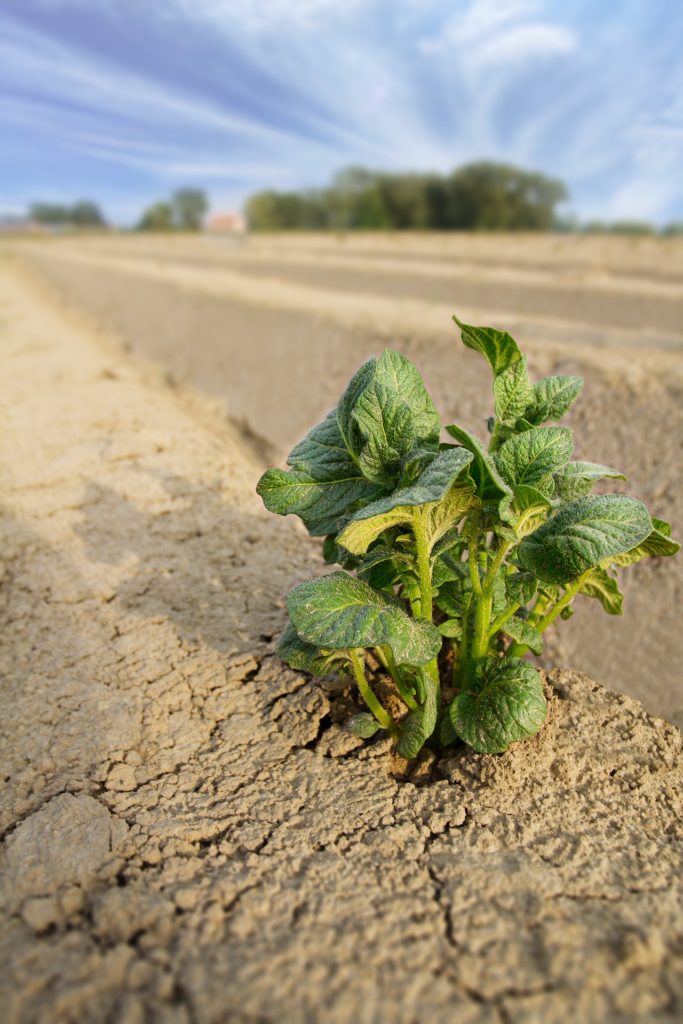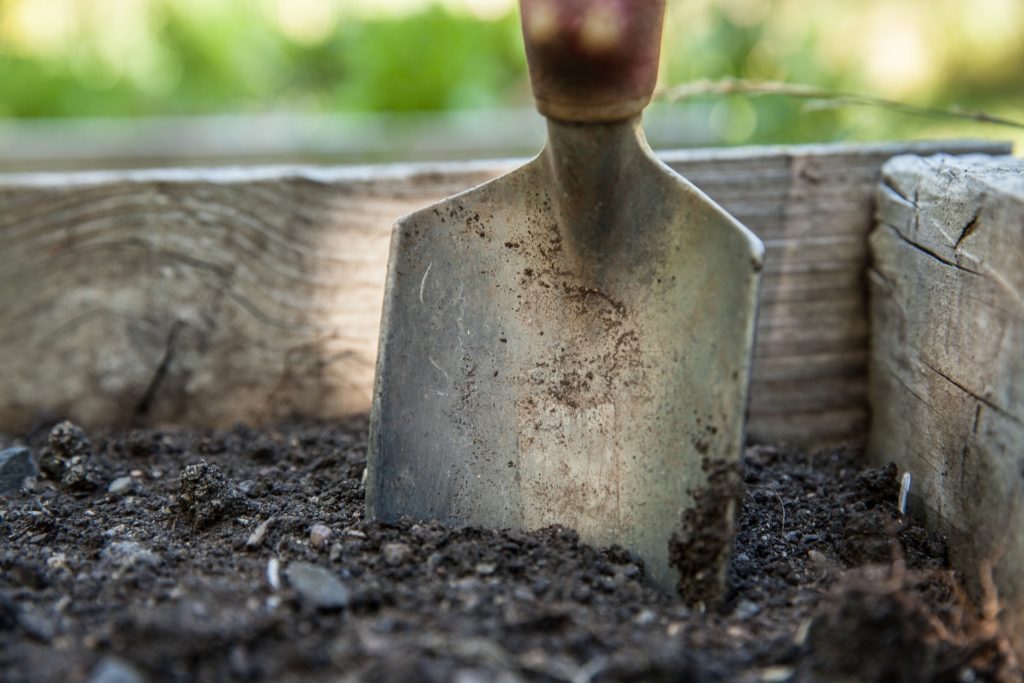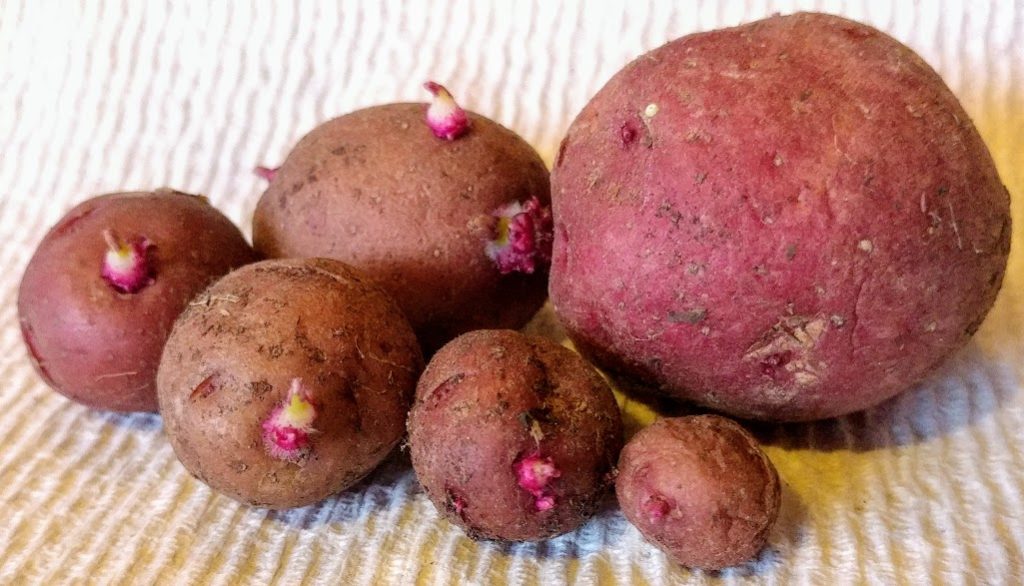When you look at a potato, you’ll see lots of tiny indents; each one being a single eye.
These eyes will give rise to sprouts if you keep them in your pantry long enough; but ff they’re sprouting in the winter, here’s how to delay them until spring.
Virtually every eye on the potato will spring to life, hoping to fulfill its destiny as a tall, healthy potato plant.
Well, that is if you don’t eat it, first!
Each sprout will grow into a single plant, producing its very own tubers to store energy within to survive the winter so new plants can grow in the future.
This is the best method of potato propagation, as planting tubers provides plants that are clones of the mother plant; seeds don’t grow true.
If you intend to take these eyes and turn them into plants, let me walk you through how to plant potatoes from eyes; and please, come back and show us your harvest!

Selecting Healthy Potatoes with Strong Eyes
Healthy potato tubers are important for raising and planting healthy plants that provide edible tubers. Choose disease free seed potatoes, which should be available to you in your local garden stores. If grocery store potatoes are the only ones that you can use, please be aware that you run a high risk of growing diseased potatoes or contaminating your soil.
Make sure that each potato has between 1 and 3 strong, healthy, undamaged eyes. If there are blemishes, scratches, or other forms of damage on the eyes, you should select another potato. If you are just growing a single experimental potato plant to see what it looks like, this won’t be as important for you. However, you still want a healthy looking tuber; so if you are searching through a bag of potatoes meant for consumption, choose the strongest, largest, cleanest potato from the bunch.

How to Plant Potatoes from Eyes
Once you have your potatoes selected, I recommend a good chit. Chitting potatoes ensures that the tubers break dormancy and send out sprouts. If you are having issues getting your tubers to sprout, check out our chitting potatoes tips & troubleshooting post in order to get your potatoes sprouting as soon as possible. Once the chitting begins, cut your potatoes up into 2 to 3 pieces (no smaller than a golf ball) to maximize plant yield, and allow the pieces to cure before planting.
As the sprouts continue to grow, you need to make sure that they are receiving plenty of light. You should also already have your garden plot prepared for your potatoes right as the tubers begin to show signs of life. Some people enjoy planting their potatoes in the dirt, the old fashioned way. Others like to grow their potatoes in containers, and yet others LOVE the raised bed or no dig method of potato gardening due to the ease of harvesting.
When sprouts are an inch long, plant them 4″ to 6″ deep in the soil. Plants should be allowed to grow to about 12″ in additional height above that soil level, and you should then cover the remaining 6″ to 8″; meaning that the seed potato piece is under 12″ of soil in total. This serves to protect the potato plant from drought and heat, while keeping the tubers safely tucked away out of the sun’s reach. If sunlight reaches tubers, you could have this toxic solanine scenario on your hands.

Does a Seed Potato Have to Have an Eye to Grow?
Generally, a sprout will only be seen erupting from the eye of the potato plant. If you are trying to plant potatoes that don’t have eyes, it is likely that you cannot see the eyes; or, you are trying to grow an incredibly small potato tuber. Even still, these tiny tubers generally have eyes.
If a potato truly does not have an eye, it is very likely that you will not see any sprouts form on the tuber. This would likely be caused by a fluke in nature; it is very unusual to see any tuber without eyes, as you can see below.

Should I Water My Potatoes While They Chit?
Most people do not water their potatoes while they chit. However, I love to offer my sprouts water. I find that the tiny plants grow far faster when they are exposed to water. Keep in mind: when you expose the sprouts to water, they will grow young root systems. This is how the tuber and its sprouts are meant to react; warmth and moisture triggers the release of sprouts, which are then triggered to grow roots in order to absorb moisture for the quick growth that the sprout is about to embark on.
You will need to take special care of these rooting plants, and you must be prepared to plant them as soon as they are ready for the soil. Don’t allow young roots to become dried out or injured; the sprout’s energy is derived mostly from the potato tuber itself, meaning that the energy for growth is limited.